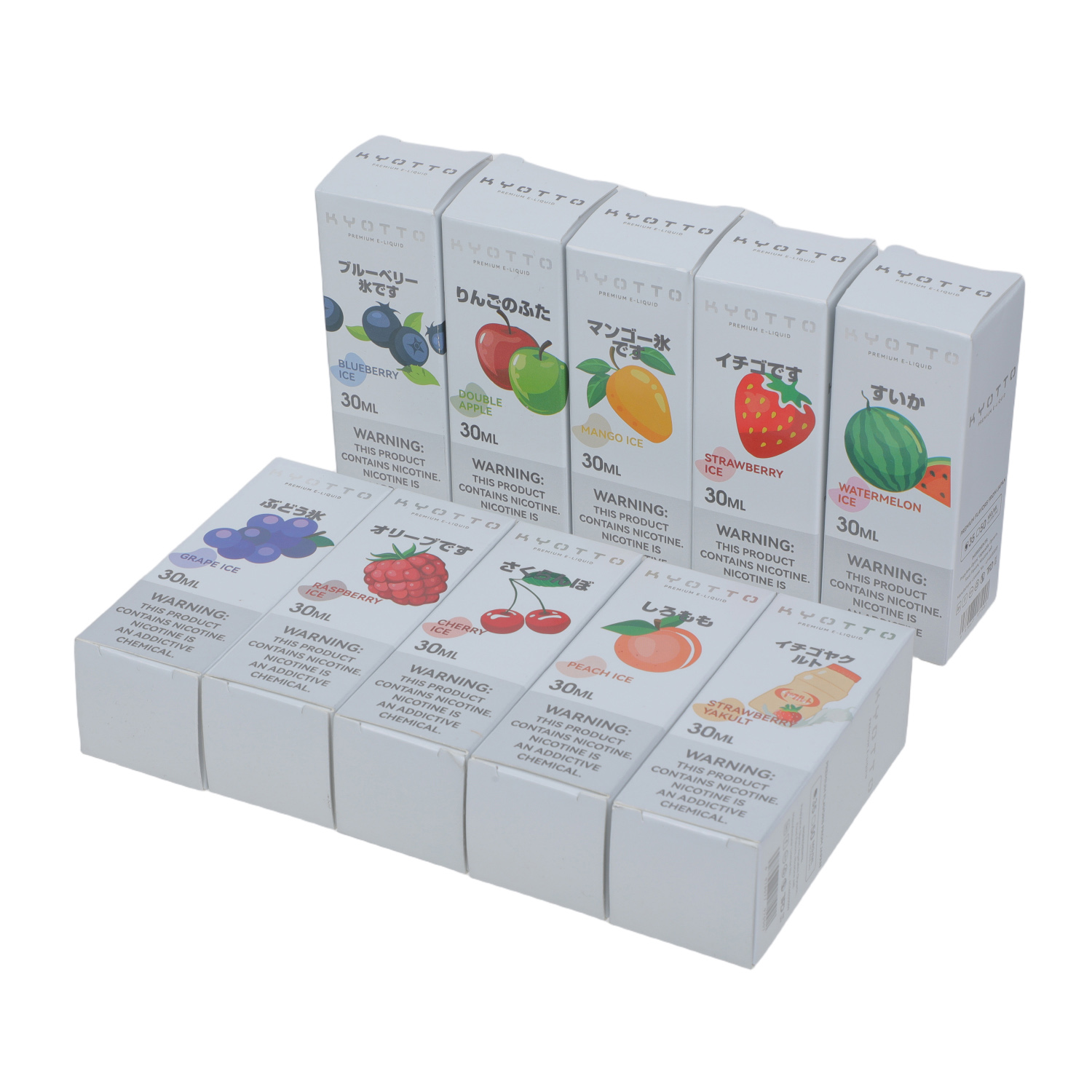
As a substitute for traditional cigarettes, one of the key appeals of e-cigarettes lies in the wide variety of e-liquid flavors. Whether it's refreshing fruit, rich dessert, or classic tobacco, flavors play a dominant role in shaping user experience and influencing flavor profile evaluations.
This article explores the importance of e-liquid flavors, how flavor profiling can attract consumers, and how to optimize flavor selection to meet market demand.
The Core Role of E-Liquid Flavors
1. Flavor Defines the User Experience
The flavor of e-liquid directly shapes the sensory experience of vaping. Studies show that over 80% of e-cigarette users consider flavor their top priority when selecting a product. Fruity flavors like mango and strawberry are especially popular due to their refreshing and approachable taste, while dessert-inspired options such as creamy cake or caramel pudding attract users seeking a richer, more indulgent experience.
2. The Value of Flavor Profile Evaluations
Flavor profile evaluations involve scientifically analyzing aspects such as taste, aroma, and throat hit to help users find the e-liquid that best suits them. These assessments go beyond individual flavors and take into account complexity, longevity, and device compatibility. For example, certain e-liquids may deliver a more intense flavor on high-wattage devices, while others perform more smoothly at lower power settings.
3. Diverse Flavors to Meet Market Demand
The rapid growth of the e-cigarette market has led to a surge in flavor variety. From classic mint and tobacco to more adventurous blends like ice cream or coffee, brands continuously innovate to appeal to different consumer segments. In fact, global data suggests that the e-liquid market is expected to reach $15 billion by 2024, with new flavor launches playing a key role in driving this growth.
How to Enhance Brand Competitiveness Through Flavor Profiling
1. Build Trust with Professional Evaluations
By conducting professional flavor evaluations, brands can showcase their product’s uniqueness and high quality to consumers. Evaluation reports typically cover the following aspects:
Aroma: The scent of the e-liquid during inhalation and exhalation.
Taste: The intensity, sweetness, and freshness of the flavor.
Throat Hit: The level of throat sensation or irritation upon inhaling.
Aftertaste: The lingering flavor left in the mouth after vaping.
These detailed assessments help consumers better understand the product, thereby increasing their purchase intent.
2. Drive Innovation with User Feedback
Collecting user feedback is crucial for optimizing e-liquid flavors. Brands can leverage social media, surveys, and customer reviews to learn about consumer preferences. For example, in recent years, low-sweetness and highly refreshing fruity flavors have gained popularity due to health trends. Brands can adjust their formulas based on this data to launch products that better meet market demands.
3. Boost Visibility with SEO Optimization
To attract more potential consumers, SEO optimization is essential. Key strategies include:
Keyword Optimization: Use high-traffic keywords in articles and product descriptions, such as “e-liquid flavors” and “fruit-flavored e-liquids.”
Content Marketing: Publish blogs, videos, or review articles related to e-liquid flavors to engage target audiences.
Localized SEO: Tailor keywords for different markets, e.g., “best e-liquid flavors in China” or “top-selling e-cigarette flavors in the USA.”
Popular E-Liquid Flavor Recommendations for 2025
Based on extensive customer reviews, market trends, and user feedback, here are some of the most favored e-liquid flavors for 2025:
Tropical Fruit Blend: A perfect fusion of mango, strawberry, pineapple, coconut, watermelon, passion fruit, and more. Refreshing and suitable for all-day vaping.
Minty Ice: Delivers an intense cooling sensation, ideal for users seeking a refreshing and energizing experience.
Vanilla Custard: Sweet but not overpowering, with rich layers of flavor, perfect for dessert lovers.
Classic Tobacco: Mimics the taste of traditional cigarettes, making it a great choice for users transitioning from conventional smoking to vaping.
Future Trends: Personalization and Sustainability
With the increasing demand for personalization, e-liquid brands are beginning to offer customized flavor services, allowing users to create their own unique blends according to their preferences. Additionally, sustainability has become a new industry trend. Many brands are adopting natural extracts and eco-friendly packaging to appeal to environmentally conscious consumers.
Conclusion
E-liquid flavors play a dominant role in flavor profile evaluations, not only defining the user experience but also driving brand competitiveness in the market. Through professional flavor evaluations, user feedback, and SEO optimization, brands can better meet consumer needs and increase market share. Looking ahead, with the rise of personalized customization and sustainability trends, the e-liquid market is poised for more innovation and opportunities.